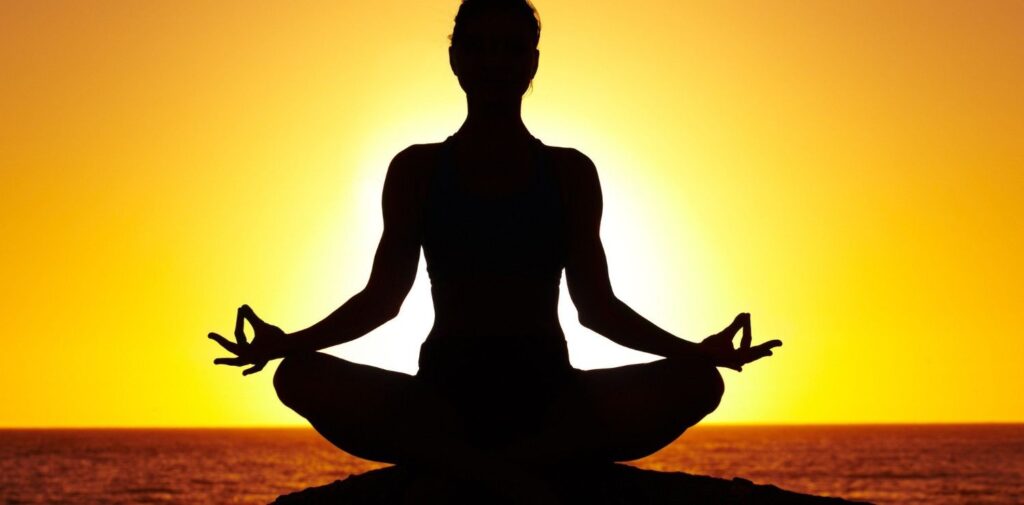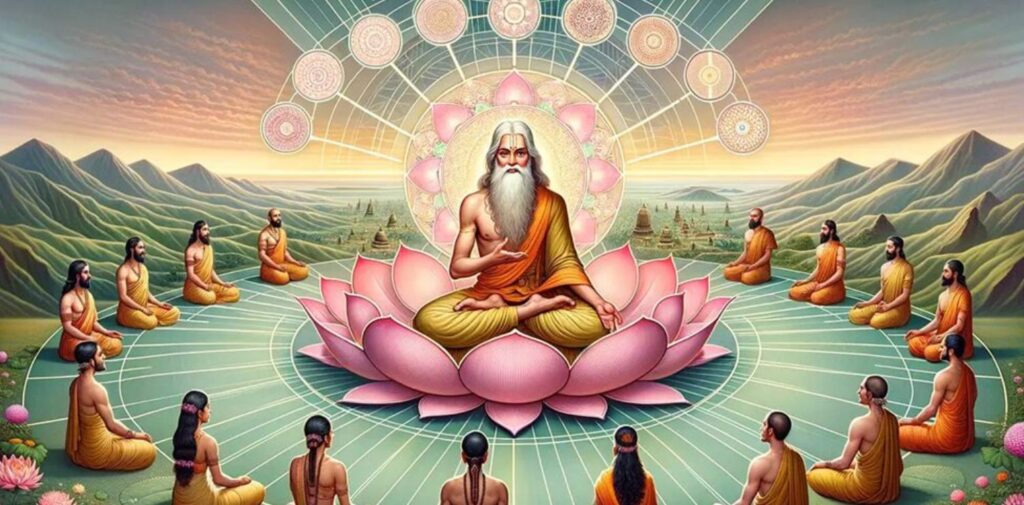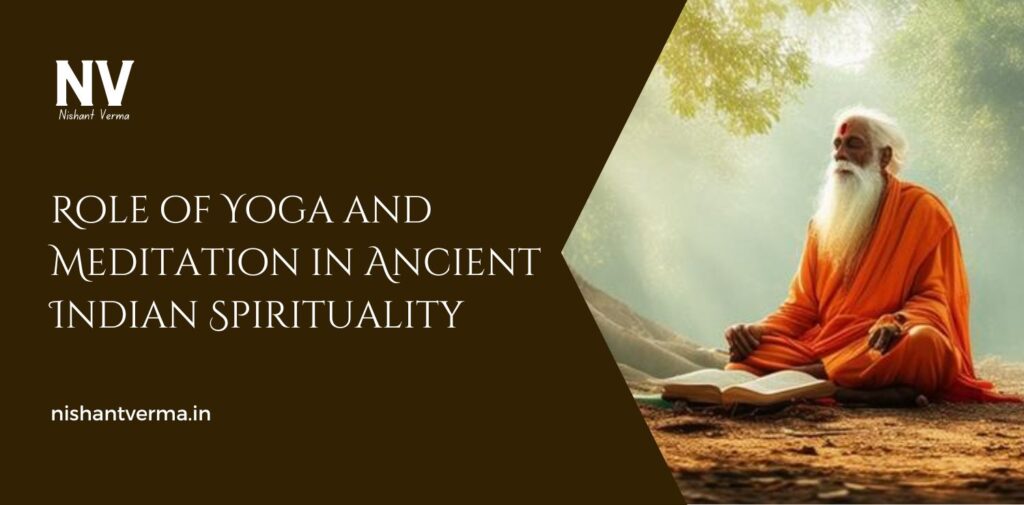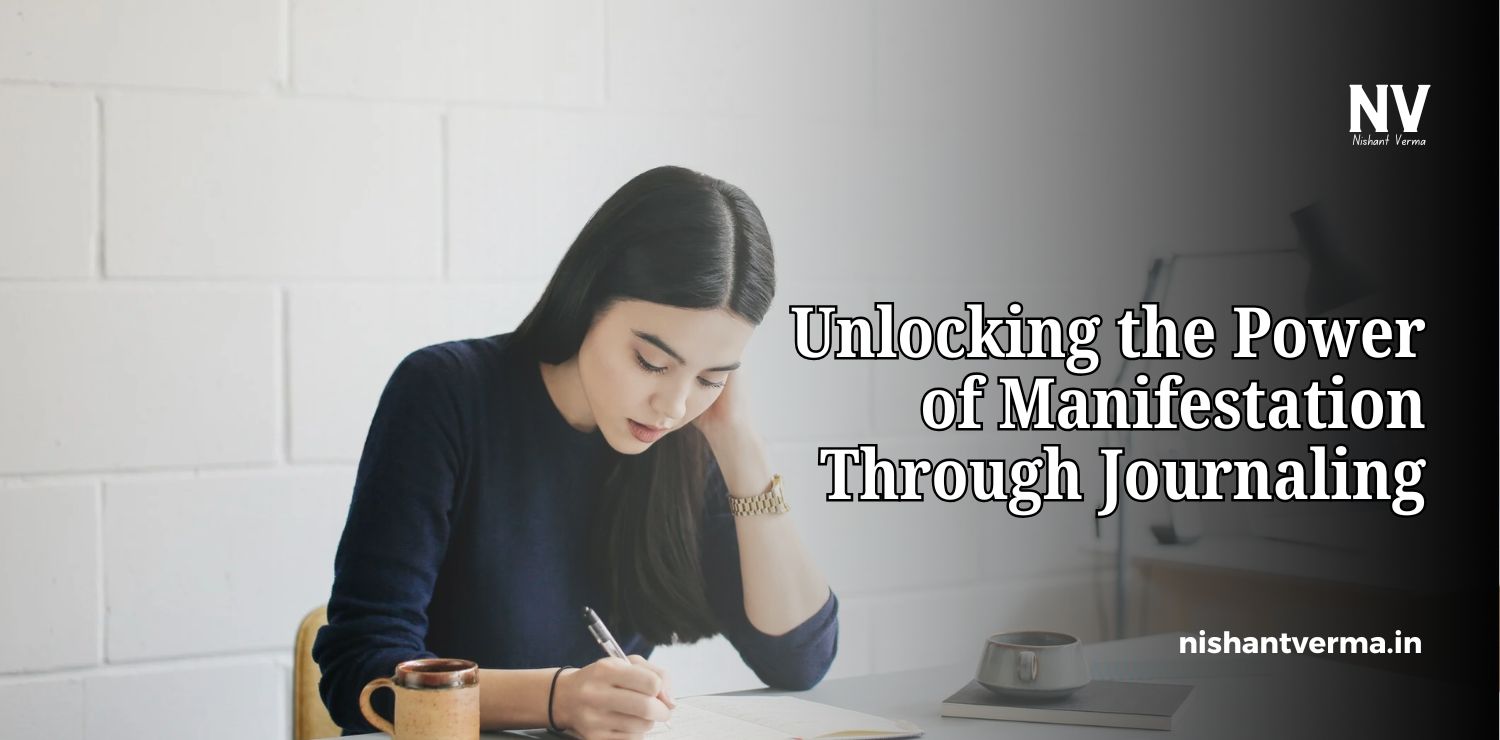Yoga and meditation are two of the most important parts of Indian spirituality. They are not just about exercises or sitting quietly; they are deep practices that connect the body, mind, and spirit. These practices have been around for thousands of years and were an important part of ancient Indian life. People in ancient India used yoga and meditation to find peace, understand themselves, and get closer to the divine. Let’s explore how yoga and meditation were important in ancient Indian spirituality.
What is Yoga and Meditation?
Before we go into history, it’s important to understand what yoga and meditation are.
- Yoga is a practice that involves stretching, breathing exercises, and certain postures. But it’s not just about physical exercise. Yoga also teaches how to live a balanced and peaceful life. It helps people focus their mind and body together.
- Meditation is a practice of sitting quietly and focusing your mind. When you meditate, you try to let go of all the noise in your head and feel calm and centered. It helps you understand your thoughts and emotions better and connects you to your inner self.
Now, let’s look at how these two practices were used in ancient India.

Birth of Yoga and Meditation in Ancient India
Yoga and meditation are believed to have started in ancient India thousands of years ago. The earliest evidence of yoga comes from the Indus Valley Civilization, which existed around 5,000 years ago. Archaeologists have found images of people sitting in meditative poses, showing that meditation was practiced long ago.
Over time, the practice of yoga and meditation became more important. They were part of the teachings found in ancient Indian texts called the Vedas. The Vedas are sacred books that contain knowledge about life, the universe, and how to live a good life. These books taught people how to connect with nature, control their minds, and live in harmony with the world.
The Spiritual Side of Yoga and Meditation
In ancient India, yoga and meditation were not just physical exercises. They were deeply spiritual practices. People used these practices to connect with their higher selves and with God. The ultimate goal of yoga and meditation was to find peace and spiritual awakening.
In the Upanishads, which are part of the Vedas, there are many stories and teachings about meditation. These texts explain how meditation can help people understand the true nature of the universe and their own soul. It was believed that through deep meditation, a person could reach a state of nirvana or moksha—a place of perfect peace where the soul is free from the cycle of birth and death.
Yoga was also seen as a path to connect with the divine. It was believed that by practicing yoga, people could calm their minds and gain wisdom. The famous sage Patanjali wrote a book called the Yoga Sutras, which is one of the most important texts on yoga. In this book, he explained the different steps of yoga that could lead a person to enlightenment.

How Yoga and Meditation Helped Ancient Indians
In ancient India, people believed that yoga and meditation were tools for self-improvement. They were practices that helped people become better versions of themselves. Here’s how they helped:
Mental Peace and Focus
Life in ancient India, like today, could be stressful. People faced challenges and struggles, and they needed a way to deal with these problems. Yoga and meditation helped people calm their minds and focus.
Through regular practice, people could quiet the noise in their heads and find inner peace. Meditation helped people stop thinking about all their worries and instead focus on the present moment. Yoga helped people relax their bodies and ease any tension, so they could feel calm and clear-headed.
Physical Health
While yoga is often seen as a spiritual practice, it also had many benefits for the body. Ancient Indians used yoga to improve their health and strength. The postures and stretches helped to make the body flexible, strong, and healthy.
Many yoga poses were designed to strengthen muscles, improve balance, and promote better breathing. These physical benefits helped people stay healthy and live longer lives. By practicing yoga, people could take care of their bodies and make sure they were fit to perform their daily duties.
Self-Understanding and Growth
Yoga and meditation were also about personal growth. People used these practices to better understand themselves. In meditation, people spent time thinking about their lives and reflecting on their thoughts and feelings. This helped them understand why they behaved the way they did and how they could improve.
Yoga encouraged people to be disciplined and live in harmony with others. It taught them how to control their desires and live simply, without being attached to material things. This helped people grow spiritually and become more compassionate, kind, and wise.
Connection to the Divine
For many ancient Indians, the goal of yoga and meditation was to connect with the divine, or God. They believed that by practicing yoga and meditation, they could experience a deeper spiritual connection. Meditation helped people focus on their inner selves and understand their connection to the universe.
Yoga helped people align their minds, bodies, and spirits with the divine. It was believed that through these practices, a person could experience a sense of oneness with God and the entire universe. This connection brought peace and a sense of purpose to their lives.

Importance of Yoga and Meditation in Ancient Indian Texts
Many ancient Indian texts teach about the power of yoga and meditation. The Bhagavad Gita, one of the most famous spiritual texts, talks a lot about yoga. In the Bhagavad Gita, the god Krishna explains to the prince Arjuna that yoga is a way to live a balanced and peaceful life. Krishna teaches Arjuna about different types of yoga, such as Karma Yoga (the yoga of action) and Bhakti Yoga (the yoga of devotion). The Gita shows that yoga is a way to connect with the divine and live a life of love and service to others.
The Yoga Sutras by Patanjali are another important source of knowledge about yoga. Patanjali’s teachings focus on the eight steps of yoga, which guide people towards a peaceful and enlightened life. These steps include things like moral conduct, self-discipline, and concentration.
Yoga and Meditation Today
Even though yoga and meditation began in ancient India, they are still very important today. People all over the world practice yoga and meditation to stay healthy, calm, and spiritually connected. In modern times, yoga has become a popular way to exercise and relax, while meditation is used to help reduce stress and improve mental health.
In India, yoga and meditation continue to be an essential part of life. Many people go to places like Rishikesh and Varanasi, where they can learn ancient techniques of yoga and meditation. These practices are deeply connected to Indian culture and spirituality.
Conclusion: The Timeless Wisdom of Yoga and Meditation
Yoga and meditation are not just ancient practices; they are timeless ways to live a better life. They teach us to be kind, peaceful, and wise. In ancient India, people used these practices to connect with their souls, find inner peace, and grow spiritually. Today, yoga and meditation continue to inspire millions of people around the world.
By practicing yoga and meditation, we can all learn to balance our bodies and minds, find peace in our busy lives, and live with a deeper sense of purpose. These ancient practices, which started thousands of years ago in India, still guide us on our journey towards happiness and spiritual growth.




